- Trending:
- Pope Leo Xiv
- |
- Israel
- |
- Trump
- |
- Social Justice
- |
- Peace
- |
- Love
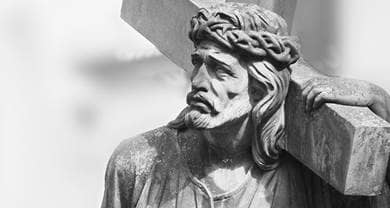
RELIGION LIBRARY
Christianity
Exploration and Conquest
 From its beginnings, Christianity has been an apostolic, or missionary faith based on Jesus' exhortation to "go and make disciples of all nations" (Matthew 28:19-20). When the Spanish and the Portuguese initiated an era of global exploration and conquest in the late 15th century, the reaping of souls became inextricably woven with the conquest of land, peoples, and resources.
From its beginnings, Christianity has been an apostolic, or missionary faith based on Jesus' exhortation to "go and make disciples of all nations" (Matthew 28:19-20). When the Spanish and the Portuguese initiated an era of global exploration and conquest in the late 15th century, the reaping of souls became inextricably woven with the conquest of land, peoples, and resources.
In 1492, when Ferdinand of Aragon and Isabel of Castile expelled the Muslims from Granada, they completed the reconquest of Spain. Several months later, Christopher Columbus and 100 Spanish Christians landed at Santo Domingo in present-day Dominican Republic.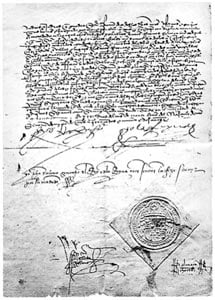 Convinced that the Spanish crown had been divinely ordained to bring salvation to the New World, Ferdinand and Isabel sent out a second expedition in 1493. A convoy of seventeen ships carried 1500 men—soldiers, missionaries, and administrators—to the New World, bringing Spanish-style feudalism to Latin America. The Spanish soldiers carried superior weapons into battle with the indigenous Aztec, Maya, and Inca peoples. Perhaps the greatest of Spanish weapons were their horses, an animal unknown to the New World Indians. An ardent desire to impose Christianity and Spanish rule on the continent and a lust for the dreams of rumored riches forged a callous brutality in these conquistadors, who decimated the civilizations they encountered.
Convinced that the Spanish crown had been divinely ordained to bring salvation to the New World, Ferdinand and Isabel sent out a second expedition in 1493. A convoy of seventeen ships carried 1500 men—soldiers, missionaries, and administrators—to the New World, bringing Spanish-style feudalism to Latin America. The Spanish soldiers carried superior weapons into battle with the indigenous Aztec, Maya, and Inca peoples. Perhaps the greatest of Spanish weapons were their horses, an animal unknown to the New World Indians. An ardent desire to impose Christianity and Spanish rule on the continent and a lust for the dreams of rumored riches forged a callous brutality in these conquistadors, who decimated the civilizations they encountered.
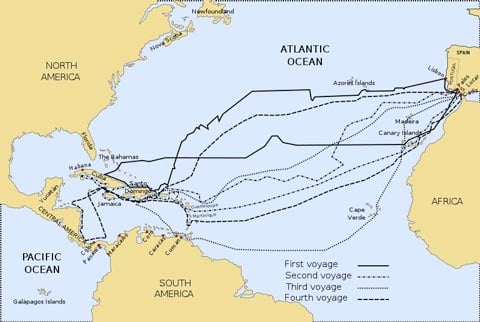
In the early 16th century in North America, Spanish missionaries arrived with the conquistadors in Florida and the Chesapeake. Several decades later, missionaries and soldiers arrived in the area around New Mexico, where they forced the native Pueblo people to convert. In the 17th century, missionaries arrived in California and built a series of missions. Here conversion was less violent. Protestant missionaries from England came to the colonies of New England in the 17th century.
As African slaves were imported in increasing numbers to the American colonies during the 18th century, Baptist and Methodist missionaries introduced Christianity to the slave population. Although the churches were controlled by the slaveholders, there arose an indigenous Christianity created and controlled by the slaves. This slave religion wove Christian language and beliefs into African culture and the lived experience of slavery.
Catholic missionary efforts in Africa in the 16th-18th centuries withered from the difficulty of obtaining support from Europe, and many Protestant efforts at evangelization in the early 19th century suffered a similar fate. One major exception was found in Sierra Leone, where in 1787 an emancipationist group sponsored the return of Africans from London. The resulting community in Freetown became the source for a growing network of West African Christian communities. But these communities did not take root in the rural populations.
Missionary efforts in Africa increased dramatically after 1870, and while the missionaries were not notably successful in winning converts, they were spectacularly successful in learning local languages, teaching, and developing hospitals and health care systems. They translated the Bible into dozens of African languages, which brought Biblical Christianity into the heart of African communities.
Christian missionaries first reached western China in the 7th century, where it is believed the church survived for about two centuries. Franciscan missionaries reached China in the 14th century, but the distance from Europe was too great to obtain the necessary support to sustain the mission. A Jesuit mission in the 16th century survived for about a century and a half. Roman Catholic and Protestant missionaries arrived in China in the middle of the 19th century, and when the Boxer Rebellion failed at the end of the 19th century, many young people turned to Christianity for fresh moral and social resources. The establishment of Communist rule in 1949 officially suppressed, sometimes violently, all religions, forcing Christians to go underground.
 Spaniards arrived in the Philippines in the 16th century, and in the three and a half centuries of Christian rule, most of the population was converted. Protestant missionaries arrived after the Americans defeated the Spanish in 1898, and almost all mainline Protestant denominations are established there. The Philippine Republic is the only Christian nation in Asia.
Spaniards arrived in the Philippines in the 16th century, and in the three and a half centuries of Christian rule, most of the population was converted. Protestant missionaries arrived after the Americans defeated the Spanish in 1898, and almost all mainline Protestant denominations are established there. The Philippine Republic is the only Christian nation in Asia.
Jesuit missionaries arrived in Japan in 1549 and experienced resounding success, converting hundreds of thousands by the close of the 16th century. But a wave of persecution put an end to this missionary enterprise, and missionaries were not allowed back into Japan until 1858. Protestant missionaries arrived in the Korean peninsula in the second half of the 19th century, and Christian life in South Korea became especially vibrant after World War II.
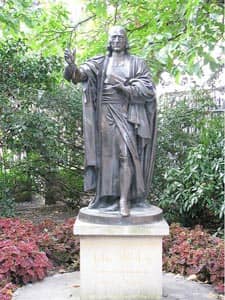 During these centuries, Christian denominations were often divided over important issues. Many churches, especially in the 15th and 16th centuries, were in favor of enslaving Africans and the Indians of the Americas. Although many slaveholders were Christian, important opponents of slavery were also Christian, including the Society of Friends (Quakers) who opposed slavery as early as 1688. John Wesley, the founder of the Methodist Church, was a passionate opponent of slavery. The abolitionist movement in Western Europe and the Americas was rooted in Christian evangelicalism, organizing and directing the efforts of various 18th- and 19th-century Christian communities dedicated to ending the slave trade.
During these centuries, Christian denominations were often divided over important issues. Many churches, especially in the 15th and 16th centuries, were in favor of enslaving Africans and the Indians of the Americas. Although many slaveholders were Christian, important opponents of slavery were also Christian, including the Society of Friends (Quakers) who opposed slavery as early as 1688. John Wesley, the founder of the Methodist Church, was a passionate opponent of slavery. The abolitionist movement in Western Europe and the Americas was rooted in Christian evangelicalism, organizing and directing the efforts of various 18th- and 19th-century Christian communities dedicated to ending the slave trade. 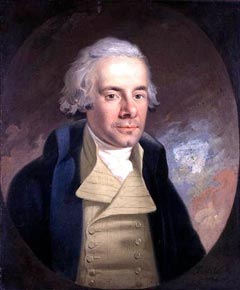 William Wilberforce (1759-1833), a member of the British parliament and an English evangelical, worked tirelessly to pass legislation banning the slave trade within the British empire.
William Wilberforce (1759-1833), a member of the British parliament and an English evangelical, worked tirelessly to pass legislation banning the slave trade within the British empire.
In the 19th and 20th centuries, Christians were divided over colonialism. While many European Christians believed in the civilizing mission of their cultures, others were uncomfortable with the injustices that accompanied the establishment and maintenance of colonies. British and French colonial policies were not always supportive of missionaries, who were occasionally instrumental in documenting atrocities and speaking out on behalf of the rights of the colonized. In the 19th century, a greater consciousness of cultural imperialism grew among missionaries, who gained a new appreciation for the contributions that the evangelized were making to a renewed vitality in Christianity.
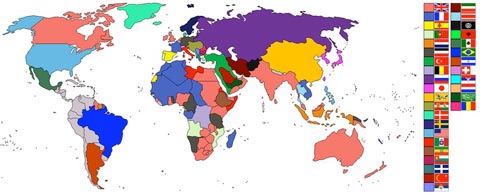
By the 20th century, Christian missionaries had spread throughout the world, and Christianity was thriving on every continent. The effects of Enlightenment humanism and the scientific revolution had secularized much of the world and had challenged Biblical authority that had seemed unimpeachable since the biblical canon and key doctrinal beliefs were first created. Christian morality would be sorely tested by the violence of the 20th century, but the liveliness of Christian communities everywhere seemed undiminished.
Study Questions:
1. Why is the text of Matthew 28:19-20 important? How does this justify the role of mission within the church?
2. Describe the relationship between the Spanish-style feudalism of the late 1400s and Christianity.
3. Describe Christianity's conquest of Asia. Was it successful? Why or why not?
4. How was slavery viewed within Christianity?










